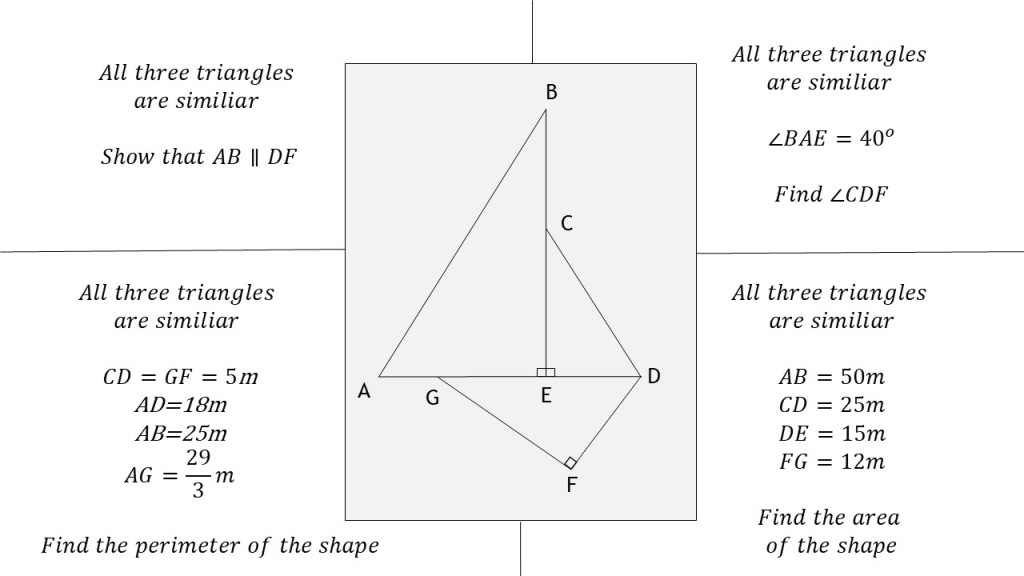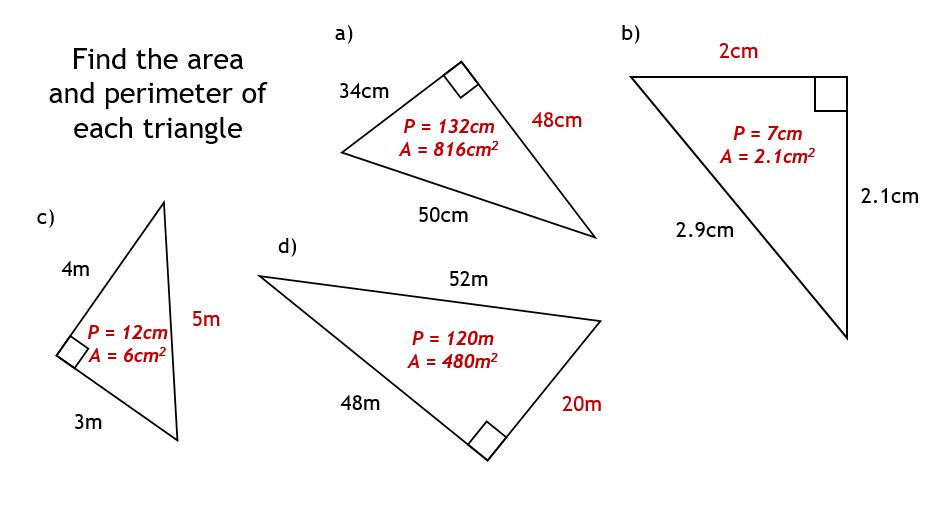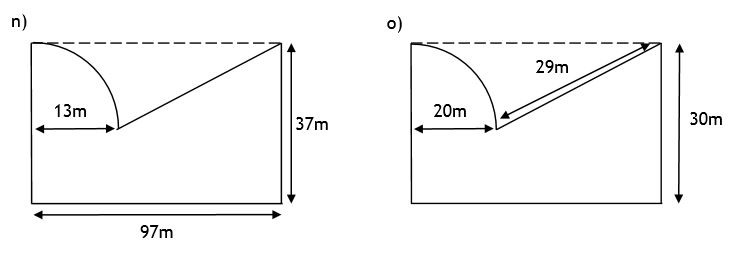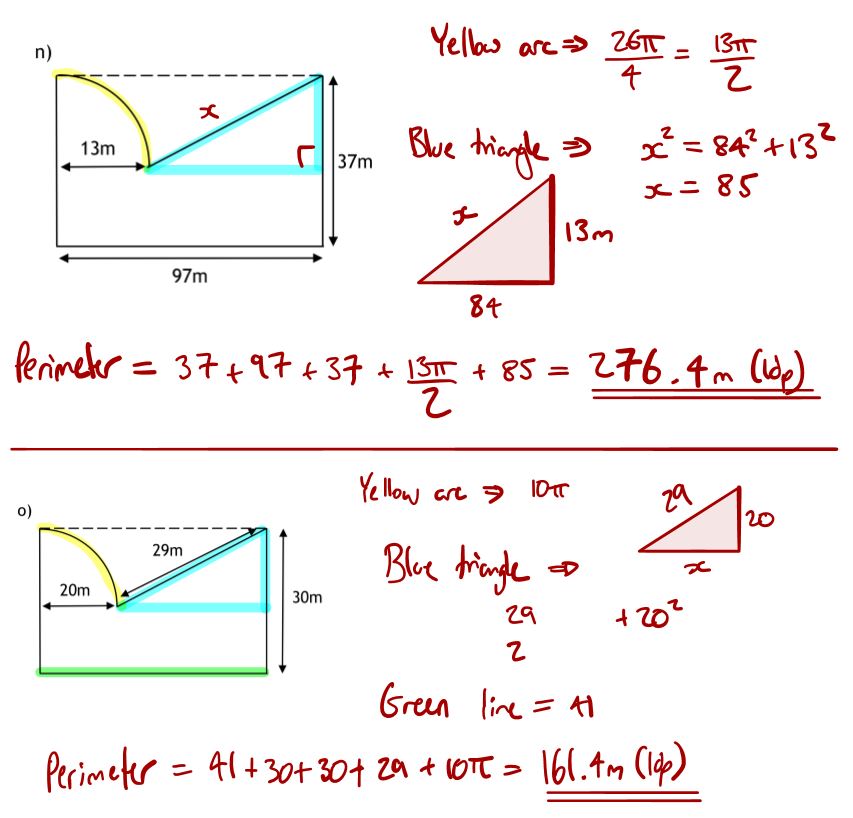The way I think about teaching kids to apply a technique/procedure/skill/knowledge/whatever has developed.
I used to do as I was told was good practice, shoehorning in crap contexts, like:
Janine whacks a 10 metre ladder against an 8m wall so it touches the top of the wall. How far away from the wall is the base of the ladder?
I thought this would help pupils model the maths they’ve practiced to a “real-life” context (completely ignoring that in the example above it’s much easier to measure the length of floor than it is the height of a wall) and while there is value in this, it doesn’t develop mathematical thinking.
Taking the same right-angled triangle from the context and adding and extra line, these questions below do stimulate mathematical thinking and meaning making in a better way:
Using the diagram as a jumping off point, pupils can really see if they can apply Pythagoras as it’s nested within a whole host of other mathematics and with lots of filtering needed to make meaningful sense of the ideas in the question.
Similarly, the relationships between each row and each column pair begins to unpick the underlying structure of this set of triangles, and can act as a further jumping off point to many content areas.
This set of questions deals with ratio, proportion and mensuration as the link with Pythagoras. A similar diagram below sets up the converse of parallel line reasoning and similarity with Pythagoras perimeters:

How do we get there though? How do we set pupils up to be able to tackle questions like this? Is it worth our time?
In this post (Decision Making With Right-Angled Triangles) I shared a resource around method selection for Pythagoras versus trigonometry in right-angled triangles with a view of pulling things together. I used this as a revision resource during trigonometry, but could also be a good starting point for filtering which questions are possible with the maths we know when doing Pythagoras.
Giving students a selection of questions and deciding which ones they have the maths tools to do is a valuable exercise in pinpointing exactly where they are.
Below is an excerpt from the area and perimeter resource linked above that could be given to pupils before coming to Pythagoras to make it explicit that some questions already have enough information to find the area (e.g. question c), and even though they look the same, simple tweaks can turn the maths needed for a question on its head. (A Level integration anyone?)

The other resource is a collection of geometry problems that are challenging and require lots of breaking down to complete as well as pulling together previous learning about finding simple arcs of circles. In a and b it’s not immediately obvious that this requires Pythagoras at all.
There are also full worked solutions for these rather than just answers given that they are much more involved.


Filtering out information that we need when answering a question is a key aspect of mathematical thinking – likewise, as with the two questions above and their solutions, slightly altering the information given on the same diagram invites pupils to see the structure of the geometry underlying this specific shape, and how each component relates to both each other and the whole.
This is what I consider applying Pythagoras, and is much richer mathematically than trying to work out what Janine’s doing with her ladder.



I think you have made some errors in the adjacent triangles questions. In the fourth question it seems impossible for the perimeter of ACD to be double the perimeter of ABC. The answer provided is CD = 5m. This would not make the perimeter of ABC half the perimeter of ACD. Also, in the last question there is insufficient information. You have provided one side for each triangle and no other information. It is impossible to calculate the perimeter without knowing one more side e.g., DG, or something else.
LikeLike
Ooops, brilliant! Thank you Maureen! Just updating the post now with changes 🙂
LikeLike
I think there may also be an issue with the question where your answer is 67 1/3 m. The question states that AD=15m. So the sum of AE and ED should be 15. This should be used to check any solution. I get a perimeter of 65.27m with AE=8.70m and ED=1.74m. I think there must be something wrong with the details provided. Is there definitely a set of three right-angled triangles which satisfies these criteria or was the length of AG chosen arbitrarily?
LikeLike
Yep! The mistake in this one was AD should have been 18 and not 15. Then we get to 67 and a third. Apologies! Thank you for flagging this up.
LikeLike